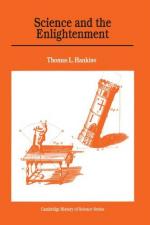
|
| Name: _________________________ | Period: ___________________ |
This quiz consists of 5 multiple choice and 5 short answer questions through Chapter 2, Mathematics and the Exact Sciences.
Multiple Choice Questions
1. According to the beginning of Chapter 1, in 1759 the French mathematician ________ described a revolution that he saw taking place in natural philosophy.
(a) Jean Lerond d'Alembert.
(b) Newton.
(c) Euler.
(d) Carnot.
2. Chapter 2 states that ________ had been created to deal with the problem of motion and that the new mathematical techniques discovered in the eighteenth century were all responses to the challenges of mechanics.
(a) Geometry.
(b) Arithmetic.
(c) Calculus.
(d) Statistics.
3. Descartes's "quantity of motion" is equivalent to our modern principle of the conservation of ________.
(a) Hermeneutics.
(b) Impression.
(c) Formalism.
(d) Momentum.
4. In Chapter 1, who claimed that his "principle of least action" proved the existence of God?
(a) Newton.
(b) Pierre-Louis-Moreau de Maupertuis.
(c) Malebranche.
(d) Leibniz.
5. Who came out in support of vis viva in 1722 and concluded that "what was before only a dispute of words now becomes a dispute about real things"?
(a) Musschenbroek.
(b) Voltaire.
(c) Galileo Galilei.
(d) 'sGravesande.
Short Answer Questions
1. Who carried rational mechanics to the highest point of generality and abstraction that it was to reach during the Enlightenment?
2. Chapter 2 reveals that Leibniz wrote the "second difference" in calculus as ________.
3. What was the name of the priest of the Congregation of the Oratory, who was also a philosopher, mathematician, and member of the French Academy of Sciences?
4. Chapter 1 states that in 1700, ________ first talked about an "almost complete revolution in geometry" that had begun with the analytic geometry of Descartes.
5. Who believed that the universe would run down if it were not for God's intervention to renew his creation?
|
This section contains 262 words (approx. 1 page at 300 words per page) |

|




